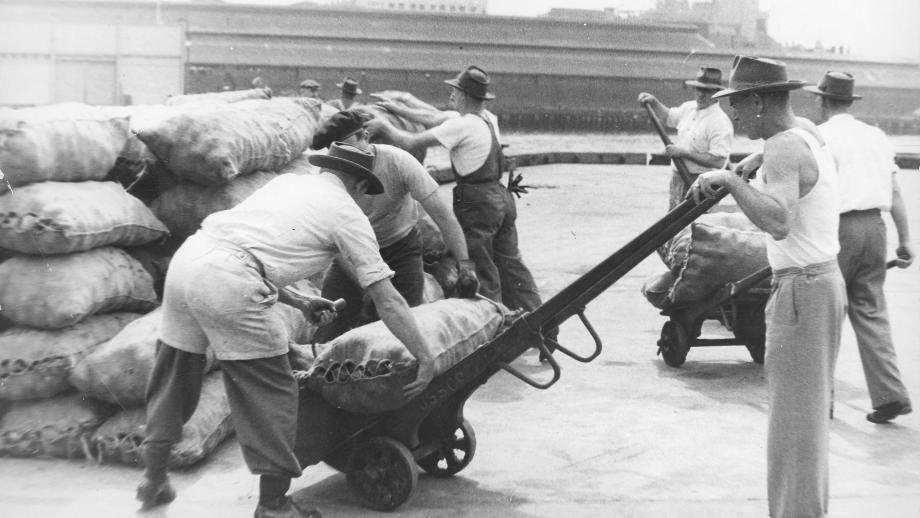The Changing Nature of Waterside Work
One of the biggest threats to waterside workers was not in the form of industrial disputes, but instead came through mechanisation. From the late 1950s, the Waterside Workers' Federation, under General Secretary Jim Healy, realised that increasing mechanisation was inevitable and that arguably the best the union could hope for was to advocate for wharfies to be an integral part of the operation of new machinery and equipment.
There were positives to the increasing mechanisation of the industry. The wharves became safer workplaces and there were pay increases for waterside workers, but there were also inevitable job losses. Healy estimated that between the late 1950s and early 1960s, approximately 4,500 wharf labouring jobs were lost to mechanisation, particularly at ports which introduced bulk loading such as Mackay in North Queensland (Beasley 1996, p. 194). For example, once bulk loading was introduced at Mackay in 1957, only 17 workers were needed to operate the machinery, whereas previously 350 workers were needed to perform the backbreaking work of loading large quantities of bagged sugar.
Bulk loading was common in the industry by the late 1960s, but it was another technological development that had an even greater impact on the industry, containerisation. This fundamental and significant change in the way goods were delivered and loaded at ports across Australia, had far-reaching effects on the waterside workforce and WWF membership. In just the twelve months between 1971 and 1972, total hours worked by wharfies dropped 20.5% and by 1977 WWF membership had dropped to just 10,386, which was almost half what it was at the start of the decade (Beasley 1996, p. 228).
References
Beasley, M 1996, Wharfies: A History of the Waterside Workers’ Federation of Australia, Halstead Press, Rushcutters Bay.











